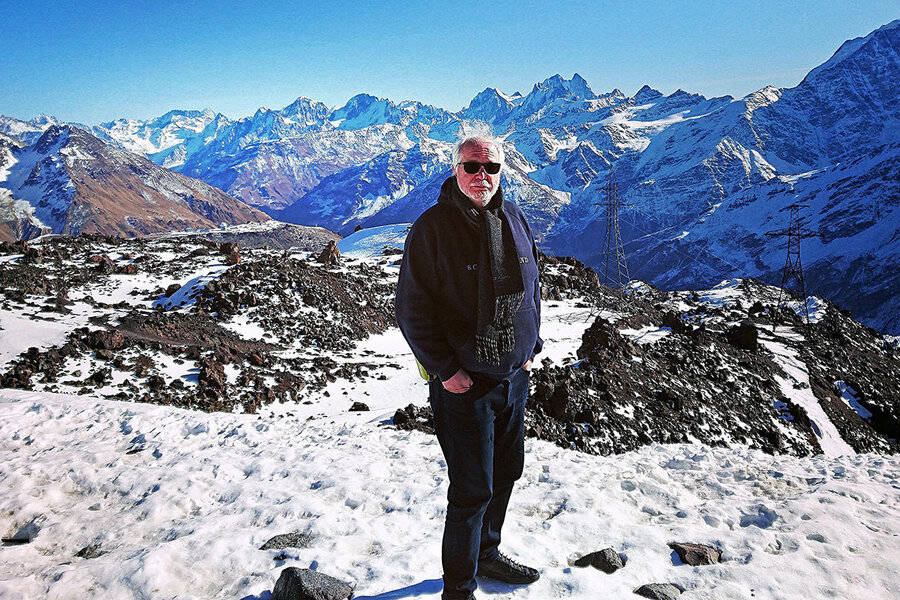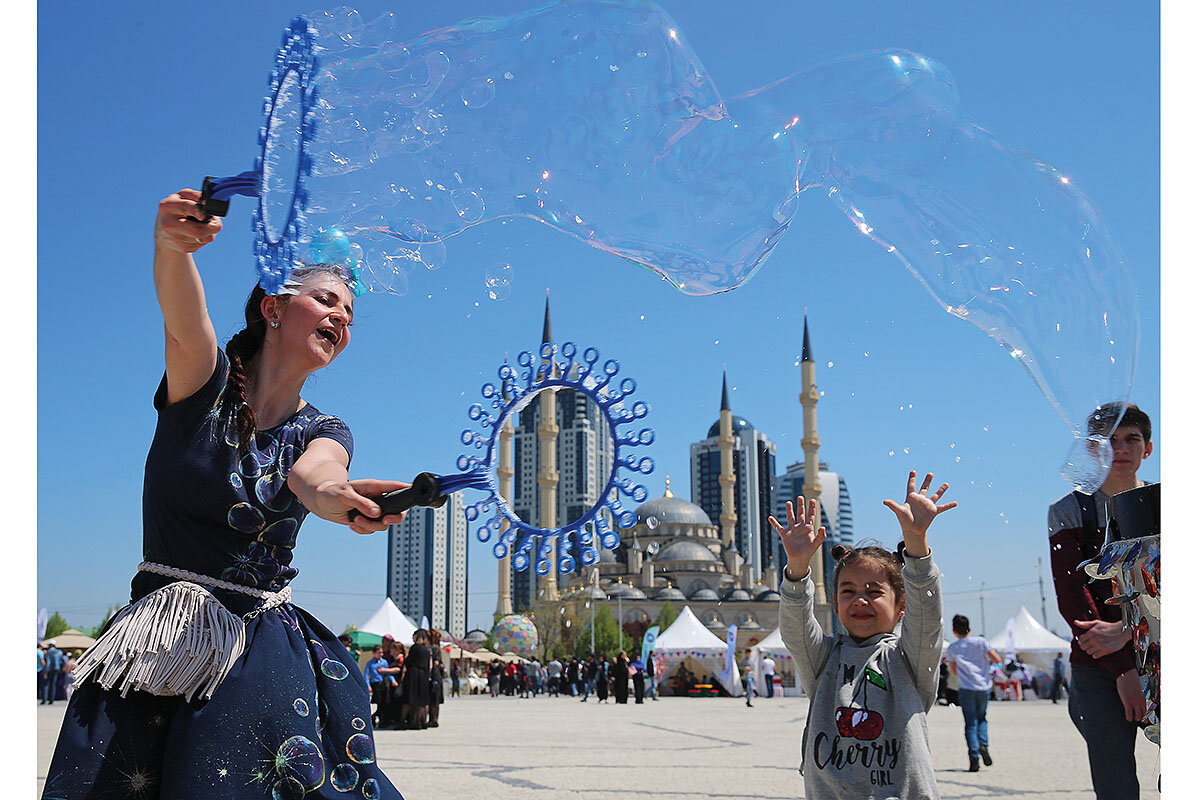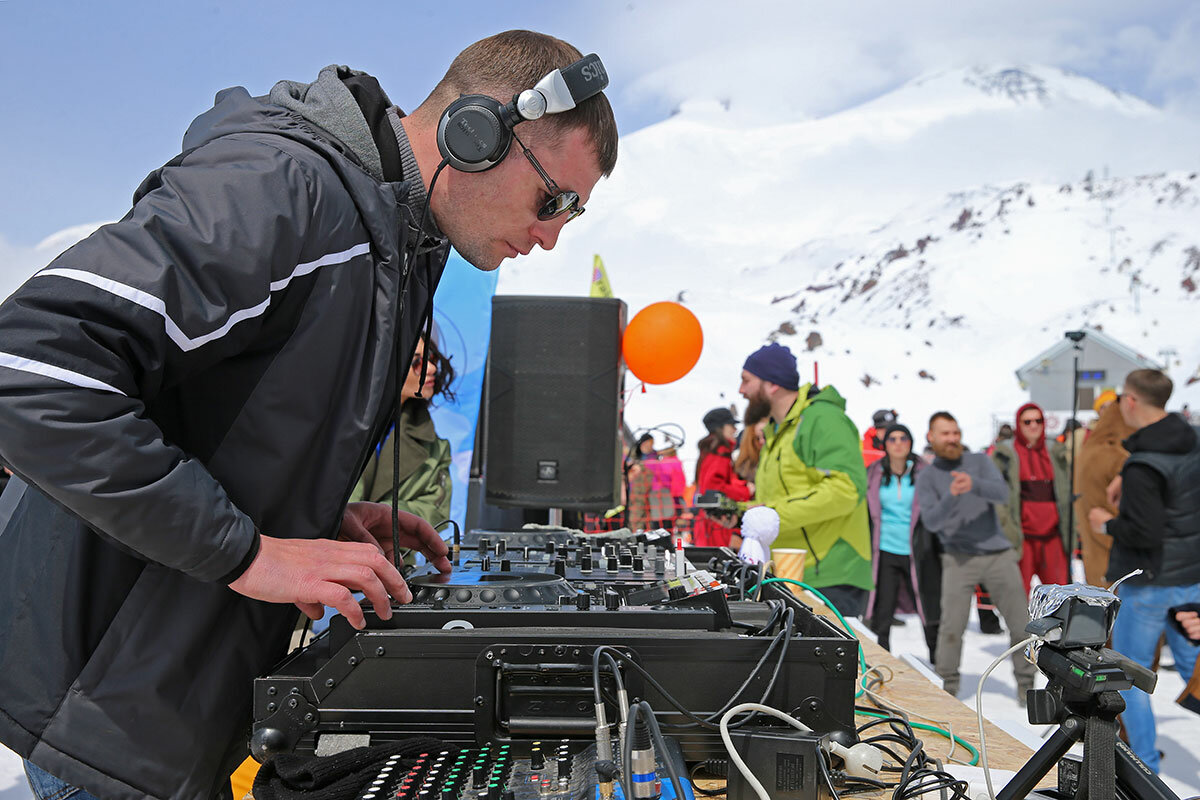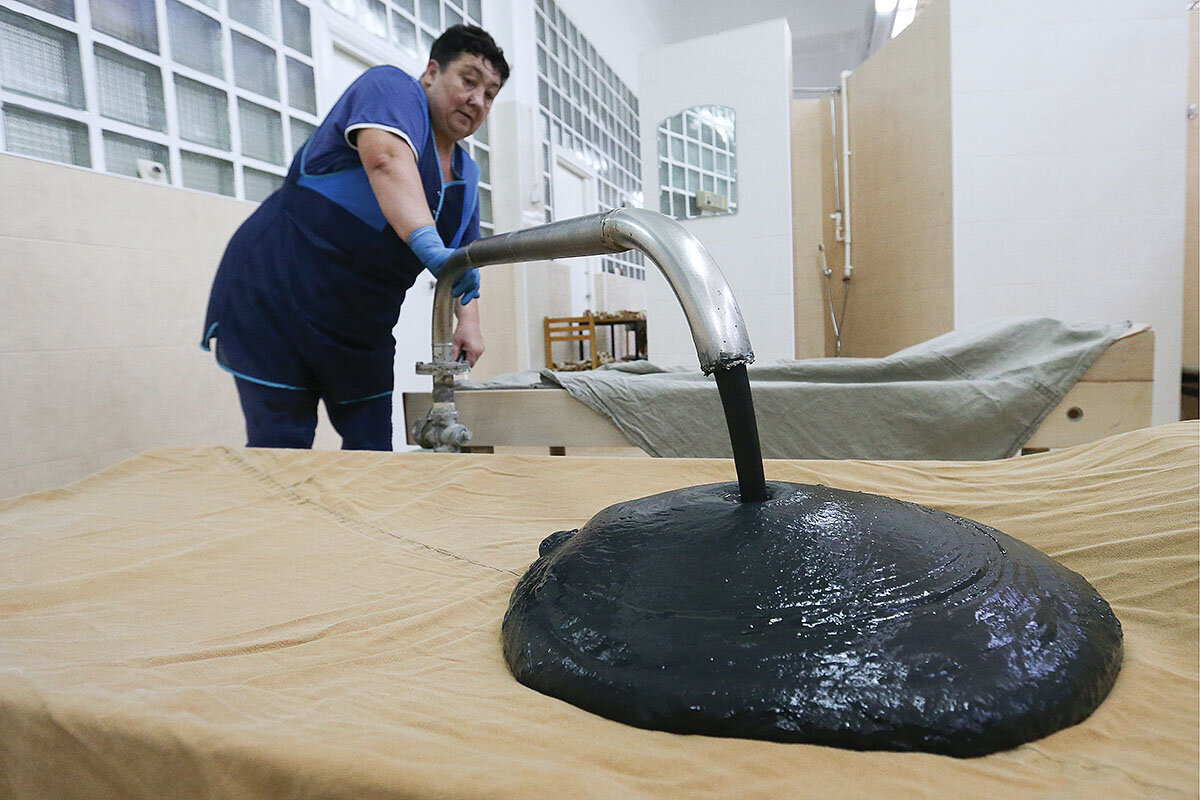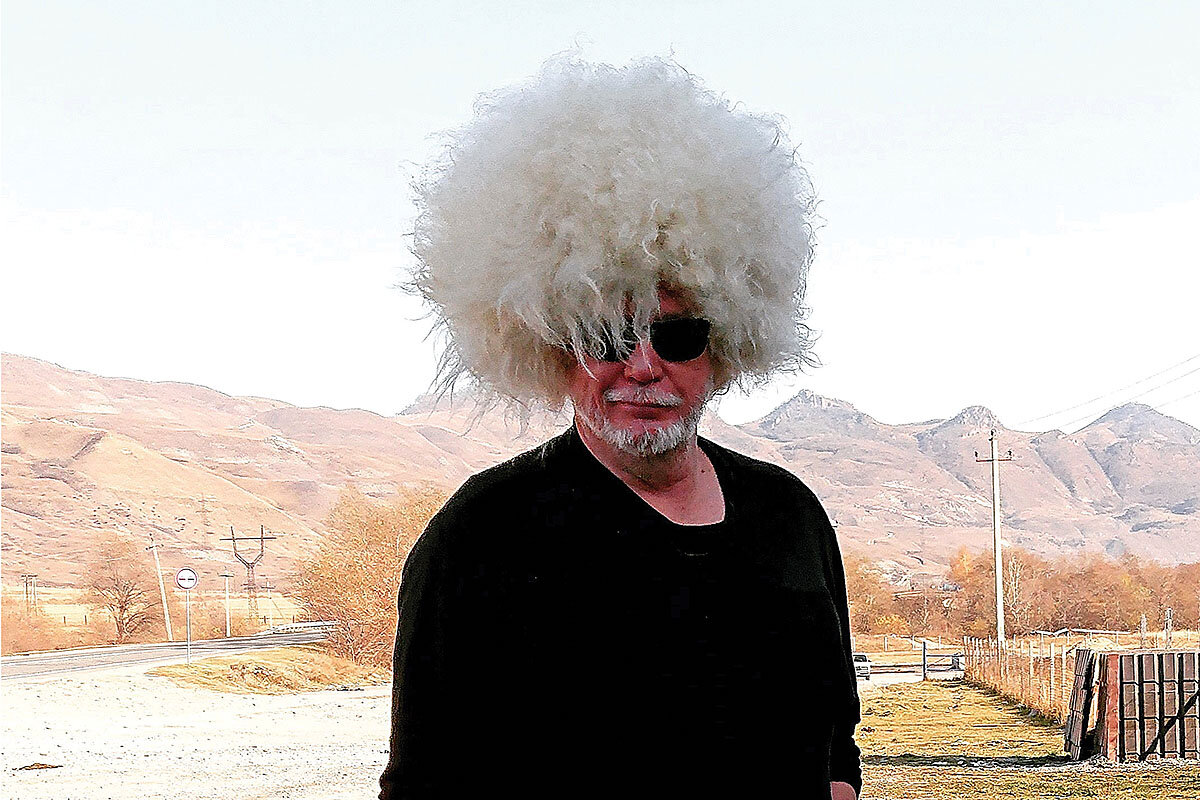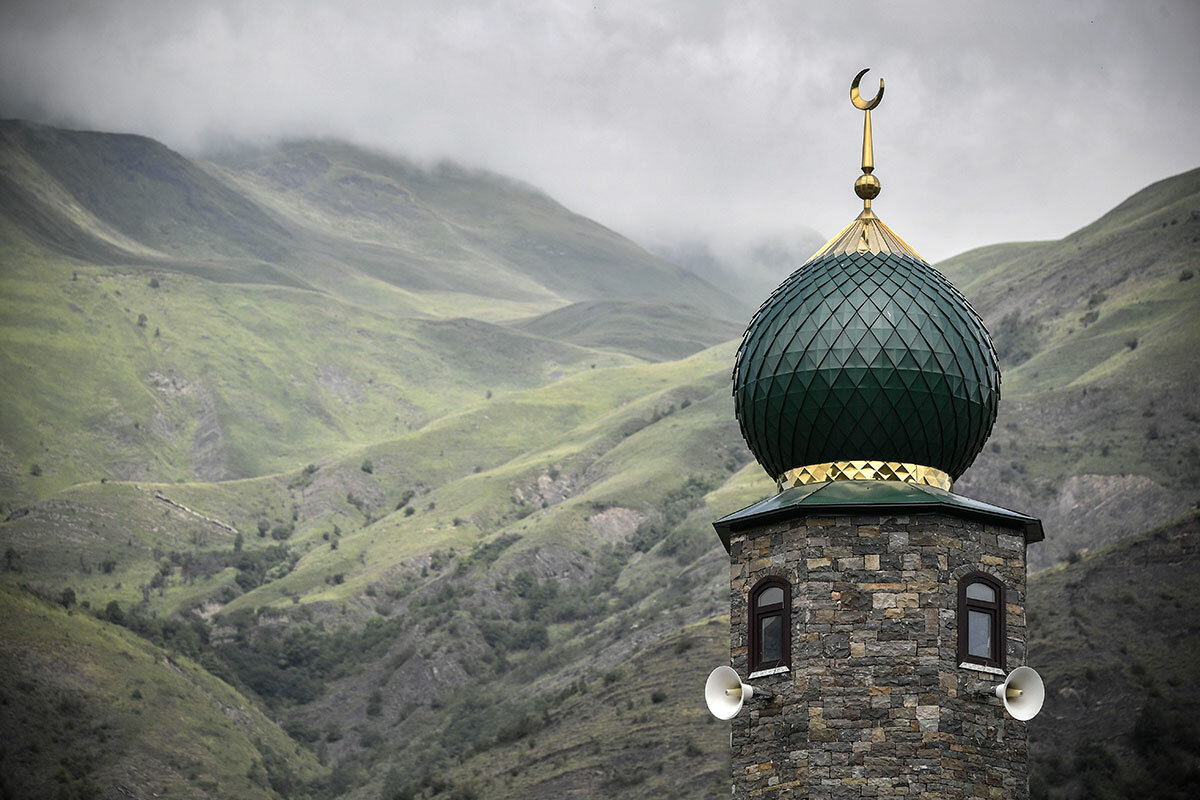Exploring Russia’s forgotten land: The North Caucasus
Loading...
| Azau, Russia
I certainly wasn’t in Moscow anymore. Looking through the window of a gondola lift, swaying high above a mountain gorge, the view was nothing but snow-gauzed peaks all around. It’s a half-hour, multistage trip to the summit of this towering mountain, and they say it’s important to focus the mind while getting accustomed to the thinning air, so I amuse myself by wondering, as if I forgot my bearings, where on earth this might be.
Somewhere in Switzerland, perhaps? No, the jumble of tiny buildings now barely visible at the mountain’s base looks distinctly un-European, and the spicy lyulya kebab I had at lunch says it’s likely a place in Asia. Maybe the Himalayas?
But in a small wooden cafe at the freezing, desiccated summit, a babushka in a woolen headscarf pours a few fingers of zavarka – thick black tea concentrate – into a glass and tops it off with boiling water from a samovar. In gentle Russian she advises me to sit, drink the tea, and breathe deeply until I find my feet. Clearly, I am still in Russia, where I have lived for more than 30 years.
Why We Wrote This
For the past 25 years, many of the small ethnic republics that make up Russia’s North Caucasus region have been wracked by wars, Islamist insurgencies, and terrorist strikes. Now they are trying to lure outsiders back – and showcase their distinct cultures.
In fact, I am in Russia’s North Caucasus Federal District, a place of soaring snow-capped mountains, vertiginous gorges, cascading waterfalls, and gushing thermal mineral springs, all set amid some of Europe’s last untouched alpine wilderness. Lying between the Caspian and Black seas on Russia’s southern fringe, it is a surprisingly beautiful, ethnically fragmented, and culturally diverse land that remains largely unknown to the outside world. Larger than France, the North Caucasus Federal District is located on a historic fault line of civilizations. Its rocky hillsides are littered with ancient fortresses, buried cities, and eerie village-like necropolises. And then there’s Mount Elbrus, Europe’s highest peak, where I am sipping tea.
Today most of this territory is divided into seven ethnic republics that identify with different religious traditions, mainly Muslim, but there are also indigenous Christians, Jews, and even Buddhists. In all, some 50 ethnic groups that speak more than 100 languages have coexisted here for centuries amid a maze of mountain valleys. In addition, the territory includes two Russian regions, Stavropol and Krasnodar, which are still heavily populated by descendants of the Cossacks.
Soviet citizens once knew these places like the back of their hands. To this day every Russian schoolchild becomes familiar with the key places and peoples of the North Caucasus – as well as romanticized stories of the 19th-century wars that dragged these territories into the Russian Empire – by reading literary classics such as Alexander Pushkin’s narrative poem “The Prisoner of the Caucasus” and Leo Tolstoy’s “The Cossacks.” Indeed, one of Tolstoy’s final works, “Hadji Murat,” is a tale of Islamist rebellion, treachery, and military subjugation by Russia in the 19th-century North Caucasus that reads as prophesy to the post-Soviet generation of Russians.
Though they were mostly forbidden to travel abroad, Soviet people nevertheless yearned to sample different cultures. So for them, the Caucasus was a permitted realm of exotica inside the Iron Curtain. And it was completely safe.
But today, even Russians are stubbornly refusing to return in large numbers. That’s because following the demise of the USSR’s attempt to homogenize all these disparate peoples into one “Soviet” type, many of them have set out to recover their own heritages and seek greater independence. As a byproduct, the past 25 years have seen two savage Russian anti-separatist wars in Chechnya, simmering Islamist insurgencies in several other republics, and devastating terrorist strikes emanating from the region.
As a reporter who has traveled often in the Caucasus over the decades, I have always been struck by the wild, magnetic attraction of the region. I wondered whether it might be turned into a genuine tourist mecca in the event that reliable peace ever returned. Even though I was usually rushing through the region covering some tragic news event, it was impossible not to stop and marvel at the jagged mountain ranges with glaciers glistening in the sun, or muse about life in those hillside villages, or just slump onto a bench at one of the ubiquitous roadside eateries to savor the rich lamb soup known as chorba.
So, when the Ministry of the North Caucasus contacted me recently and invited me to join a small group of journalists on a road trip to this sprawling territory, I quickly agreed. I don’t normally accept official guided tours, but since I wanted to gauge the tourist potential of the places I have previously seen, determine the safety of traveling there, and above all, see how much the republics have reestablished their own identities, this seemed like an agreeable way to do it. The ministry provided a veteran guide, the wonderfully informative Lyudmila Shaffrai, and tellingly, no police escort. A minibus full of foreigners driving for four days through remote mountain roads once scourged by Islamist terrorists is a pretty good security test.
“We are doing a lot to build new tourist facilities, aiming for world standards of quality. Lord knows, we have the natural wonders, including Mount Elbrus, to attract people,” says Murat Shogenchukov, minister of tourism of Kabardino-Balkaria, a mainly Muslim republic that occupies much of the central massif of the high Caucasus mountains. “We know perfectly well that if it’s not deemed to be safe, people are not going to come.”
Yet many people remain unconvinced that the Caucasus can compete with vacation spots in the now-accessible West.
“Nowadays, if you have money, you can travel to the European Alps, take a beach vacation in Turkey. And we have learned that in other countries you get good quality services for what you pay, and the kinds of services that don’t even exist in the North Caucasus yet,” says Yevgeny Butovsky, a Moscow businessman who traveled around the North Caucasus in the 1980s. “But the key issue is security. I am not convinced that the war is over down there. Maybe it’s been suppressed, but the problems have not been solved.”
Chapter 1: Do millennials like mud baths?
The first Russian settlers in the Caucasus foothills, in what is now the Stavropol region, discovered what they believed were healing properties in the more than 50 different mineral springs that bubbled up from the ground, as well as the salty mud from the vast bog known as Lake Tambukan. The spas built by the settlers never rivaled Central Europe’s, but they developed a solid reputation among Russian aristocrats of the 19th century.
But the USSR turned it into a mass phenomenon. The Soviet state subsidized the recreation and treatment for many millions each year in sanitariums for the working class that were half hospital, half hotel. Patients typically came for 21 days to receive morning medical treatments from doctors, augmented by special courses. In the afternoons, they might hike in the nearby hills, swim, or go sightseeing.
That unique public health model shriveled after the USSR collapsed, as evidenced by the giant hulks of near-empty Soviet-era sanitariums in cities such as Pyatigorsk, Zheleznovodsk, and Kislovodsk, but it never completely went away.
Tourism authorities in the Stavropol region, which was mostly untouched by the violent unrest of the past 25 years, say that up to 1 million mainly older Russians still come each year, primarily to drink and soak in the mineral waters and wallow in familiar mud baths.
“This is a 200-year-old city that was built for one purpose: to promote health. We have dozens of natural mineral water springs here, each with its own healing properties,” says Yevgeny Moiseyev, mayor of Zheleznovodsk. “These days we only use about 5% of our water; in Soviet times it was 60%. Our goal is to reconstitute that Soviet mass health culture, and bring a younger generation to appreciate our sanitariums, which are like a luxury hotel with full medical facilities.”
Vladislav Timoshenko, director of the Pyatigorsk-based Ladya agency that has been organizing tours around the region for 14 years, says the Soviet-era sanitariums might not meet the demands of younger Russians, who have traveled abroad and developed higher expectations of service, price, and quality, as well as different notions of recreation. But he insists the area has much more to offer.
“After many years, interest is growing and more people are coming down here,” he says. “There has been a good deal of public investment in roads and infrastructure, and private services like hotels, restaurants, and tourist services are growing fast. I think we’re getting back on the map.”
Chapter 2: Fluffy powder and fluffy hats
One of my most peculiar experiences on this trip was not exotic, but oddly familiar. On our second day we made a pit stop in the tiny village of Sari-Tyuz, in the republic of Karachay-Cherkessia, and my eye was drawn to a small cafe with a large sign that said “Stolovaya USSR.” A stolovaya was a ubiquitous Soviet eatery, where you could get cheap dishes, often served from big pots, like pelmeni (meat dumplings), gretchka (buckwheat porridge), and golubtsi (cabbage rolls). The menu here was almost identical to what you would have found anywhere in the USSR in those now-vanished days, with a few Caucasian dishes added in.
So I went over and ordered a pirozhok (a meat pastry) and a glass of tea. I asked the waitress, a middle-aged lady in a headscarf who declined to give her name, why they named the place Stolovaya USSR. “Well, people like that,” she says. “We don’t see many foreigners here, but Russians come through on the way to skiing or mountain climbing, and they stop and order the food. Sometimes they say it makes them feel nostalgic. Local people like it, too. There aren’t too many alternatives around here.”
Karachay-Cherkessia – along with the ethnic republics of Kabardino-Balkaria, North Ossetia-Alania, Chechnya, Ingushetia, and Dagestan – lies in the folds of the towering Caucasus Mountains. Despite their rugged natural beauty and amazing archaeological sites, these mountain republics cannot yet claim to be experiencing any new surge in tourism. But the people here have high hopes.
The ex-Soviet spa town of Arkhyz sits deep inside the republic of Karachay-Cherkessia, near the border with the small rebel Georgian state of Abkhazia. It is still renowned for its eponymous mineral water, but in recent years the Moscow government has invested about $65 million to build a modern ski resort, with two first-class slopes that have snow-making equipment, gondola lifts, and luxury hotels, as well as a variety of restaurants, cafes, and shops.
It’s the first of five major ski centers the Kremlin plans to build around the North Caucasus, and officials say more people are coming. It may help that Karachay-Cherkessia, the westernmost of traditionally Muslim North Caucasus republics, also has the most peaceful reputation.
“We’re all about mountains. Eighty percent of our republic is mountains,” says Anzor Erkenov, the republic’s minister of tourism. “We have vast glaciers, deep gorges with rushing rivers, endless hiking and horseback trails, the ruins of ancient cities, and Christian churches that date back a thousand years. If you like pure mountain herbs, berries, and honey made from alpine flowers, just stop at any market.”
But whatever the Kremlin has invested in Arkhyz doesn’t yet appear to have trickled down to the people living in ramshackle towns along the road. The poverty and isolation that created post-Soviet instability in this region are still on full display, a condition that local officials shrug at and few in Moscow seem eager to address.
Indeed, many residents appear to eke out a living in the traditional way, by harvesting the bounty of the mountains around them. As Mr. Erkenov suggested, every cluster of roadside stalls offers a cornucopia of spices, honey, and herbs that has sustained these people for millennia. Locals also sell animal hides and snug knitwear of all sorts made from the wool of the Caucasus mountain sheep. For a modest $30, you can obtain a papakha, the distinctive tall, fluffy astrakhan hat that is ubiquitous headgear for men throughout the Caucasus.
Chapter 3: Rooftop of Europe
The next republic to the east, Kabardino-Balkaria, has the tallest mountains, including Mount Elbrus at 18,510 feet, and some of the most stunning alpine scenery on earth. A three-stage cable car takes visitors to Elbrus’ top, where the wind is like an ice dagger. It’s said that on a clear day you can see the distant blue strips of the Caspian Sea in one direction and the Black Sea in the other. That wasn’t so on the day that I visited, but the spectacular central Caucasus massif was in full view, and to the south the mountains of next-door Georgia dominated the horizon.
One remarkable sight near Elbrus’ twin rounded peaks is a stark stainless-steel war memorial, commemorating a ferocious World War II battle here. In the winter of 1942-43, Nazi alpine troops seized the mountaintop and held off Soviet forces for several months.
However, there is no marker for a more recent set of tragic events, a series of terrorist attacks in 2011 that destroyed a section of the gondola lift and killed at least three tourists.
Elbrus is surrounded by a national wilderness park with its own famous source of mineral water, Narzan. It has so far received very little in the way of state investment. A small town with a jumble of private hotels and restaurants lies at the mountain’s base, but nothing like the elaborate new complex at Arkhyz. Experts say the explanation for the discrepancy probably lies in the byzantine politics of Moscow, where some republics seem more adept at prying loose federal funds than others. Khesa Bekayev, head of the Elbrus shareholders’ society, insists that it doesn’t matter.
“We would need huge financing to bring our Elbrus services up to European standards,” he says. “But, never mind, this is Mount Elbrus. It’s on all the lists of the seven top mountains in the world that people want to climb. It’s a unique place, and no one else around here has anything like it.”
Chapter 4: Monasteries and many tongues
Further east, North Ossetia-Alania is the region’s only traditionally Christian republic, tracing its heritage to the Alans, a civilization that speaks an Iranian language and dominated much of the North Caucasus in medieval times. A drive through its major mountain gorges is rich in Alanian sites, including ancient fortresses built into cliffs. It also features Georgian-style Christian churches and monasteries, as well as an amazingly well-preserved mountainside necropolis dating from the Middle Ages.
North Ossetia is where one of the most horrific terrorist attacks of the Putin era occurred. On Sept. 1, 2004, Islamist militants took more than 1,000 people hostage in a school in the sleepy town of Beslan. At least 334 people, mostly children, died when Russian forces stormed the school.
Not far away is the Roki Tunnel, through which Russian armies poured in August 2008 to repel Georgian forces that were invading the rebel Georgian republic of South Ossetia. Though all looks quite peaceful and friendly now, the oft-expressed desire of North Ossetians to unify with their ethnic kin in Russian-controlled South Ossetia, which is legally part of Georgia, could well be the source of future instability.
Chapter 5: Military tourism, anyone?
The hardest destination to sell to Russian tourists, much less outsiders, is Chechnya. The region’s main centers were smashed and the population decimated in two devastating Russian military campaigns well within recent memory.
Though I have visited Chechnya before, we did not go there on this trip. By most accounts the republic has risen from the ashes of war and rebuilt its ravaged cities with the help of massive funding from Moscow. It’s also gone the furthest down the road of cementing its national autonomy: It has a tough local dictatorship and a program of Islamization, which has created serious frictions with the Russian government over issues such as legalizing polygamy and forcing women to wear headscarves. The capital city, Grozny, now boasts one of Europe’s largest mosques.
Chechnya’s minister of tourism, an urbane, bearded man named Muslim Baytaziyev, insists that it is now completely safe to travel around his republic – whose mountain zones are as picturesque as any in the region – but admits that Russians are still very reluctant to come. Instead, he says, Chechnya’s tourist strategy will be to lure wealthy Muslim visitors from Saudi Arabia and the Persian Gulf, and republic officials are investing money to build luxury hotels and other attractions geared to the interests of Muslim travelers. One such activity, he suggests, is “military tourism,” in which visitors can drive mountain trails in combat vehicles, fire automatic weapons, and camp in military-style redoubts.
“In the Middle East there are fewer prejudices” about Chechnya, says Mr. Baytaziyev. “We hope that thanks to our halal culture, Islamic traditions, and a similar mentality, we will attract well-off customers from the Arab world. After all, they need to go somewhere in their hottest seasons. So why not come to Chechnya?”
Chapter 6: Shedding an image of danger
Ingushetia, a Chechen-speaking republic that managed to stay out of the wars, has its own small slice of high Caucasus mountain magnificence, including a village that boasts one of only two streets in Russia named after Vladimir Putin (the other is in the Chechen capital, Grozny). But Ingushetia has its own reputation for instability, including bombings and kidnappings, and has also followed its neighbor Chechnya down the road of deepening social Islamization. In Ingushetia’s main airport, Magas, the female staff members now wear headscarves and long draping robes that cover their arms and legs. The airport bar, which I recall used to dispense vodka in shot glasses, now serves nothing stronger than coffee.
Last in the mountain line is Dagestan, which, with eight official languages and dozens of smaller ones used by its 3 million people, may be the most ethnically diverse place on earth. It is well remembered by older Russians for its deep mountain ravines, isolated hilltop villages where ancient crafts like silversmithing are still kept alive, and its well-preserved ancient Persian fortress in Derbent – now a UNESCO World Heritage site. It also encompasses miles of beautiful, subtropical Caspian Sea beaches.
The republic has been roiled by multiple Islamist insurgencies for the past two decades, incessant gang warfare, and epic corruption scandals that shock even Russians. I personally have not been to Dagestan for more than 20 years, simply because it was the most dangerous place in Russia. Its ministry of tourism insists that the whole republic is now “100% safe” for tourists, but no independent expert seems willing to go on the record to affirm that.
Chapter 7: If you build it, will they come?
Thanks to various factors, Russians do appear to be returning in large numbers to many of their old Soviet-era haunts. Black Sea resorts like Sochi and holiday zones of the recently annexed Crimean Peninsula are reportedly experiencing major revivals. This is due in part to the severe devaluation of the ruble, political crises with the West, and the instability in other favorite Russian tourist destinations such as Egypt and Turkey.
But it’s clearly going to be much harder to entice even the travel-hungry Russians back to the North Caucasus, despite the stepped-up federal investment in infrastructure and the tentative appearance of peace.
“We need much better marketing outreach to spread the word that we are open for business down here and can deliver everything people expect,” says Mr. Timoshenko, the tour operator from Pyatigorsk. “It’ll take time. But as long as political stability is maintained and there are no more violent incidents, it will happen. Press coverage of this region is generally good of late, and development of infrastructure is proceeding. We have everything it takes, and we’re optimistic.”




